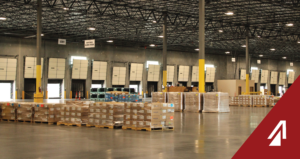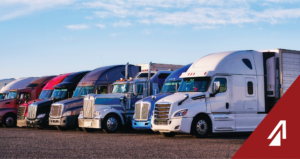On October 10, the National Highway Traffic Safety Administration (NHTSA) issued an ANPRM (Advanced Notice of Proposed Rulemaking) for removing traditional rearview and side mirrors in favor of new camera monitoring systems (CMS). The ANPRM allows the public to comment on the proposed rule change for 60 days before the NHTSA decides on whether to submit the proposed rule to the White House for implementation.
Currently, the public is divided on if removing the mirrors entirely is the best course of action. Advocates see the cameras as forward thinking as well as good for safety, for sustainability, and for finances. Others see the change as too drastic and more of a hindrance than a help. For now, the NHTSA is seeking all the input it can to make an informed decision.
What Are CMSs
CMSs are high definition camera and monitor systems that are strategically placed on the truck and trailer to enhance driver visibility. These devices have been around for several years; even the NHTSA began studying their performance as early as 2006. They serve several functions to aid drivers.
Traditionally, semi-truck drivers have had significant blind spots on the passenger side of the vehicle and have reduced visibility through turns and driving in reverse. CMSs effectively eliminate these blind spots. They position cameras in areas that a driver would not see with a mirror but provide better visibility of surrounding traffic (e.g higher on the cab or along the trailer). Then, these cameras transmit the images to monitors in the cab for the driver to view. Many systems also provide backup cameras and proximity indicators – much the same as passenger vehicles.
Other CMSs come equipped with other useful tools like night vision settings or weather resistant cameras as well. They project a brighter image of the road without the glare that traditional mirrors have and protect the driver’s vision in poor weather conditions. Overall, CMSs try to give the drivers a full picture of their surroundings.
What Is This ANPRM Trying to Accomplish
This ANPRM is inquiring whether to change Federal Motor Vehicle Safety Standard (FMVSS) No. 111, “Rear Visibility” to allow or replace rearview mirrors with camera systems – specifically for heavy trucks. FMVSS No. 111 currently states that:
Each vehicle shall have outside mirrors of unit magnification, each with not less than 323 cm² of reflective surface, installed with stable supports on both sides of the vehicle. The mirrors shall be located so as to provide the driver a view to the rear along both sides of the vehicle and shall be adjustable both in the horizontal and vertical directions to view the rearward scene.
The NHTSA has received several petitions in the past from organizations like the Alliance of Automobile Manufacturers, Tesla, and Daimler Trucks North America to replace outside mirrors with these camera systems. This ANPRM is meant to gather information about safety and viability of these camera systems and formally address these petitions.
Pros
So far, many see the CMSs as more beneficial than traditional rearview mirrors. Jason Roycht, VP of Commercial Vehicles for Bosch, said at the unveiling event for Nikola’s new mirrorless, hydrogen-electric truck, “There are no external mirrors… We like this from an aerodynamic perspective; we like it from a safety perspective.” Bosch is currently developing CMSs for Nikola Motors. Other developers, like Stoneridge, have fully developed CMSs on the market. So far, Stoneridge is the only company to be awarded an FMCSA exemption from current FMVSS standards for a mirror.
Their system, MirrorEye, has been on the market and has been fully tested by major carriers like J.B. Hunt, Maverick, and Schneider. So far, the carriers have driven nearly a million miles with the MirrorEye CMS in their vehicles with great success. Each spoke at the 2018 Truckload Carriers Association Conference about their CMS experience. J.B. Hunt, for instance, said they are seeing three times fewer right-hand side safety events with their CMS.
In addition, users have discovered several other major benefits in Stoneridge’s MirrorEye system:
Greater Field of View (FOV) :
The system is equipped with wide and narrow angle cameras that expand driver visibility by as much as 25%. Greer Woodruff, senior vice president of safety, security and driver personnel at J.B. Hunt, stated the MirrorEye all but eliminates blind spots on the right-hand side.
Fail-Safe Design :
Each camera has independent camera video processing so failure in a single camera does not disrupt the entire system. In addition, the cameras are heated and self-cleaning to prevent obstructions like ice or debris.
Augmented and Enhanced Vision Quality :
The cameras are high definition and come equipped with night vision and low light sensitive technology to help with night driving.
Trailer Panning:
Dean Newell, vice president of safety and driver training at Maverick Transportation stated that these cameras are able to move along with the trailer to, “look at the trailer all the way around the turn.”
Reduced Driver Fatigue :
The system monitors are located inside of the cab, nearer the driver, and this allows drivers to not turn their head as far to see.
Reduced Fuel Consumption :
Reports from testing show that this system can increase fuel efficiency by reducing drag by nearly 3%. These savings, according to Stoneridge, can quickly help offset the cost of the system. Not only that, but reduced fuel consumption is better for the environment as well.
Simple to Retrofit :
The system can be added to nearly any existing truck and trailer – making it simple to upgrade should the mirrorless standard be adopted.
24/7 Roadside Support:
If a camera or monitor should fail, CMSs allow for immediate support.
MirrorEye will not be unique in its benefits. Consumers should see similar results from other CMSs as more come to market. These benefits are only the beginning according to Nikola co-founder and CEO, Trevor Milton. “There is so much innovation [possible] around these cameras,” he says.
Apart from the immediate benefits these systems provide, many in the logistics industry favor testing this new technology for the sake of learning. The ATA, for example, is in favor of testing the systems and said, about the Stoneridge exemption application, “Granting this and similar petitions for exemption from FMCSR 393.80 requirements that currently are barriers to mirrorless technology will provide valuable real-world experience and data to inform future regulatory action to allow CMS technology as an alternative to rear view mirrors for all vehicle types.”
Overall CMSs appear to offer greater safety, sustainability, and financial options as well as provide valuable information to policymakers about future rules. But, many see CMSs replacing mirrors outright as going too far.
Cons
Many people opposed to CMSs fear that despite their benefits, their cost might be too much. Whether from safety, or technical failure, many people have concerns about removing traditional mirrors altogether. In fact, of the ANPRM’s current comments nearly 90% are against the proposal.
Some of the major concerns include:
Cost:
Many individuals see these CMSs as cost prohibitive for smaller trucking companies and owner operators. They worry this regulation would force them out of the market and only serve larger companies that can afford the upgrades.
Possibility of Failure :
The majority of comments focused on concern for technical failures with the camera devices. They expressed concerns that driving without the cameras and without mirrors would be impossible and unsafe.
Reluctance to Change:
Many drivers have used traditional mirrors since they began driving and worry the new technology will be either too difficult to learn, or not be what they are used to. The NHTSA said in their summary that a potential safety concern included, “The CMS display was mounted lower than traditional mirrors, which may be temporarily disorienting for drivers. (It should be noted, however, that despite initial disorientation, drivers were able to acclimate to the CMS.)”
Obstructing Views:
Even with the self-cleaning system, natural debris like rain droplets on the camera lenses can obscure the image the driver can see.
Mistrust of Current Data:
Many drivers do not trust data from manufacturers, like Stoneridge, that CMSs can reduce fuel consumption – at least not in any noticeable way.
Visibility When the Vehicle Is Off :
A major concern for drivers, so far, has been that data has not been available as to what visibility drivers will have when the truck is off. Many are concerned about exiting the vehicle while stopped and not being able to see oncoming traffic.
Difficult to Focus Physically and a Driver Distraction:
The NHTSA also found in their preliminary studies that CMS’s “image appeared to be horizontally compressed, such that objects displayed on the CMS screen were narrower and thus more difficult to detect,” and that “The display appeared very bright in certain conditions, even when set to “nighttime” mode, which may negatively impact the driver’s ability to see obstacles at night…. The system appeared to have blooming and lens flare that exceeded the level permitted under the new ISO standard for CMS under certain conditions.”
So far, most commenters on this ANPRM feel that CMSs are welcome additions to the current driving industry, but that they should not replace traditional mirrors.
It is impossible to know what impact these devices will have on the logistics industry as well as related fields like insurance and safety. So, until a decision is made, the DOT is encouraging feedback on several key areas including current policy, safety standards, quality standards, and user-friendliness on these devices. Commenters have until December 6th to submit their feedback to the NHTSA.
Don’t wait for this type of legislation to reduce rates and save you money, work with us for meaningful and lasting logistics savings: LEARN MORE



